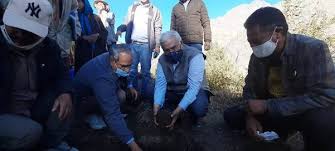
Due to efforts of CSIR constituent laboratory, Institute of Himalayan Bioresource Technology (IHBT), Palampur, a historical shift in farming practices is in the offing with farmers of the remote Lahaul valley in Himachal Pradesh taking up cultivation of asafoetida (Heeng) to utilize vast expanses of waste land in the cold desert conditions of the region.
Daily Current Affairs Quiz 2020
Key-Points
CSIR-IHBT brought in seeds of asafoetida and developed its agro-technology.
Asafoetida is one of the top condiments and is a high value spice crop in India.
India imports about 1200 tonnes of raw asafoetida annually from Afghanistan, Iran and Uzbekistan and spends approximately 100 million USD per year.
CSIR-IHBT has now introduced six accessions of seeds from Iran through ICAR-National Bureau of Plant Genetic Resources (ICAR-NBPGR), New Delhi in October, 2018.
In the past thirty years, this has been the first attempt for introduction of asafoetida (Ferula assa-foetida) seeds in the country.
Raw asafoetida is extracted from the fleshy roots of Ferula assa-foetida as an oleo-gum resin. Although, there are about 130 species of Ferula found in the world, but only Ferula assa-foetidais the economically important species used for the production of asafoetida.
In India, we do not have Ferula assa-foetida, but other species Ferula jaeschkeana is reported from the western Himalaya (Chamba, HP), and Ferula narthex from Kashmir and Ladakh, which are not the species that yield asafoetida.





